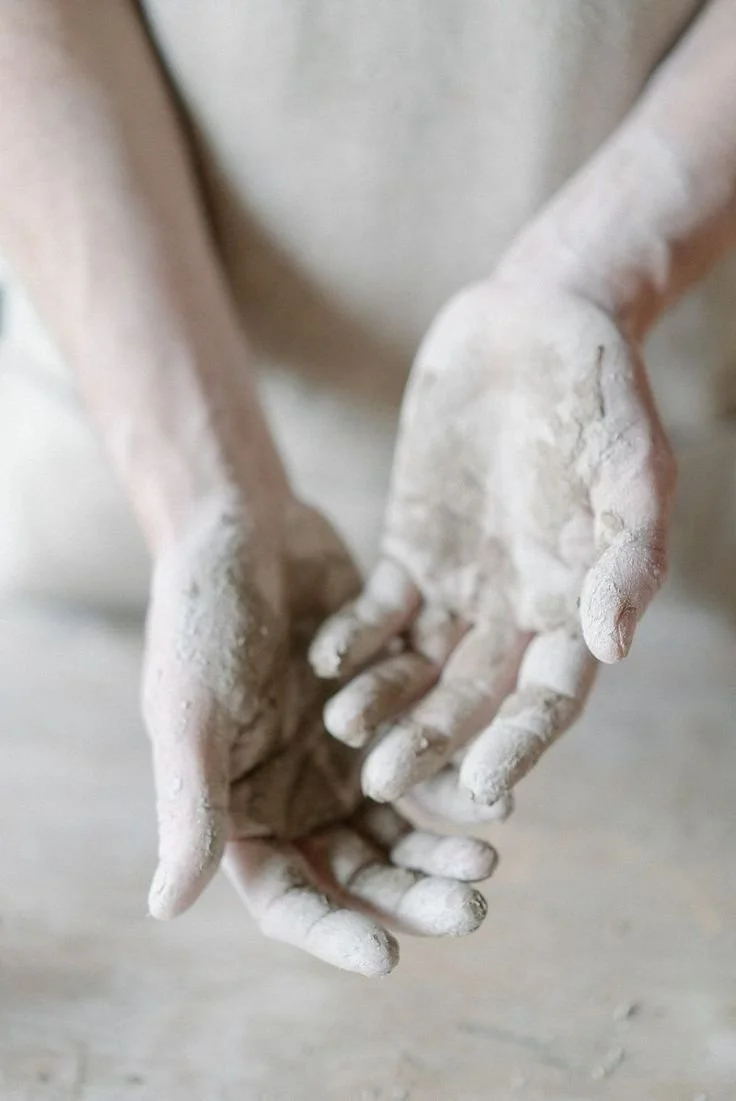Parvati’s Gaze: Creation, Nectar, and the Alchemy of Love
As I sat with the story of Parvati forming Ganesha from the clay of her own sacred body, (if you don’t know the story you can read about it here), contemplating what she did, felt like living scripture, written in the body, in the breath, in the quiet movement of attention toward the centre. What a great moment of sadhana.
In this teaching, Parvati gathers dust from her own divine body, shapes it with her hands, and from this concentration of energy, love, and maternal fire, she births Ganesha; protector, threshold-keeper, remover of obstacles. He is a being of nectar, amrta, of joy and delight. He is strength made soft. Power made sweet. The master of alamgrasa, a realised being whose enjoyment (bhukti), is anchored in spiritual awareness.
Parvati’s act of creation is not mere symbolic ritual it is the power of pratyahara, the turning inward of energy, that sense of gathering ourselves, a gathering of scattered energies, emotions, thoughts back to one’s being. This is yoga.
I love Her for it. 🪔🧡🙏🏽
She turned her gaze inward, energetically placing her hands on the wheel of her own life. Not waiting for someone else to fix the situation. She knew the answer lay within. She held her fierce and maternal gaze steady. As a powerful yogini, she was aware she couldn't escape the pain of the world, or bypass, so she enters it fully, digesting her experience through her body and creating from it as an act of sacred alchemy not metaphorically, but somatically.
In the yogic tradition, we might call this alamgrasa, the digestion of experience by Consciousness. Where pain becomes nectar. Matter becomes Light. Where even karma, when held in awareness, becomes the seed of liberation (mukti).
Her spiritual power didn’t come from escaping her karma, but from embodying it fully, working with it creatively, and embodying it as sacred form.
This is the yogic trinity in motion:
Iccha – the longing for love
Jñāna – the wisdom to turn within and access her inner resources
Kriyā – the creative action of shaping Ganesha from her own sacred earth
And so, what Parvati creates is not just a child or a deity, but a loving pathway of transformation for us all. Parvati teaches us that from the dust of sorrow, we can shape nectar. From the wheel of karma, we can spin new beginnings. And that when we love deeply and turn inward with devotion, everything becomes Shakti.
To embody our karma is not to be bound by it. It is to honour the stories stored in our cells and choose to make something sacred from them. This is Shakti, awakened.
Perhaps this, too, is a call for us, not to flee from the clay of our own lives, but to place our hands upon it with devotion, with awareness, with creative love.
So often we give our energy outward, into our community, our friendships, our service. These are sacred. They nourish our hearts. But Parvati reminds us that there is another axis of love, one that flows from the earth of our being.
She teaches us to listen to what is unborn within us. The part of us that no one else can name. The karma that longs to be shaped, not carried. The story that isn’t yet a story, only a tremble from within.
To place our hands on the wheel of our own life means to choose presence over distraction.To stop spinning in the dramas of others and to kneel before our own mud.To enjoin the Shakti’s grace, not by begging but by showing up, body first.
By saying: Please be with me, O Mother!
What will it take?
Parvati doesn’t just model this. She invites us.
She says: ”Come. Take this clay. Make your life into nectar.”


